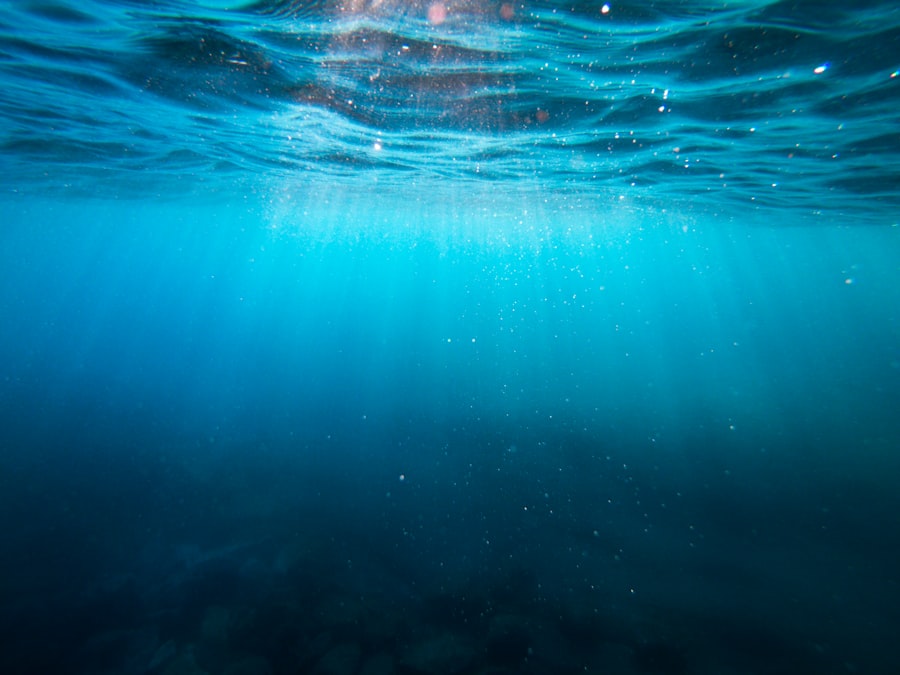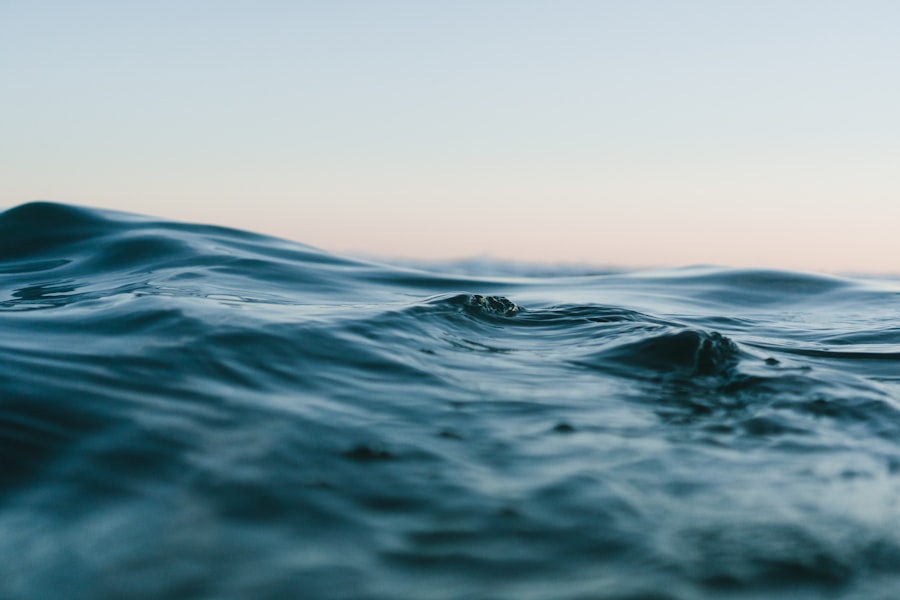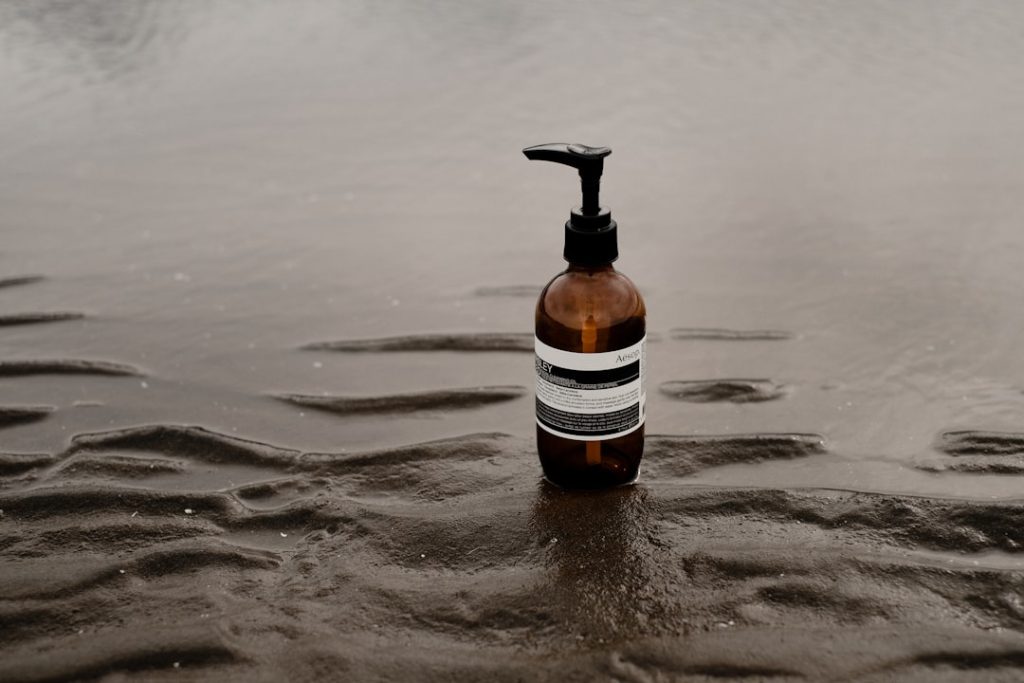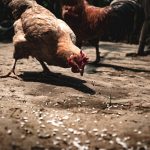Green water in a chicken’s water source can be attributed to several factors. Algae growth is a common cause, occurring in warm, stagnant water conditions. These microscopic, plant-like organisms can proliferate rapidly, turning the water green and making it unpalatable for chickens.
The accumulation of organic matter, such as fallen leaves or grass clippings, can also contribute to green water by decomposing and creating an environment favorable for algae growth. Excess nutrients, particularly nitrogen and phosphorus from animal waste or fertilizer runoff, can further promote algae proliferation. The presence of green water often indicates poor water quality, which can negatively impact chicken health and productivity.
Algae growth can reduce oxygen levels in the water, making it less suitable for consumption. Chickens drinking contaminated water may experience digestive issues, dehydration, and decreased egg production. It is essential for poultry keepers to recognize the potential causes of green water and implement appropriate preventive measures to maintain the health and productivity of their flock.
Table of Contents
Key Takeaways
- Green water in chicken coops is often caused by algae growth due to sunlight and nutrient-rich water.
- Proper watering systems for chickens include nipple drinkers or water dispensers to prevent contamination and spillage.
- Regular cleaning and maintenance of water sources is essential to prevent the growth of algae and bacteria.
- Using natural additives such as apple cider vinegar or diatomaceous earth can help prevent algae growth in chicken water sources.
- Providing shade and shelter for the water source can help prevent the growth of algae and keep the water cool for chickens to drink.
- Monitoring water quality and consumption is important to ensure that chickens have access to clean and sufficient water.
- Consulting a veterinarian for further assistance can help address any water quality or consumption issues in chicken coops.
Proper Watering Systems for Chickens
Effective Watering Systems
One effective watering system is the use of nipple drinkers, which are designed to deliver a steady supply of water directly to the chickens without allowing for contamination or spillage. Nipple drinkers can be attached to a water supply line and positioned at an appropriate height for the chickens to access easily.
Automatic Waterers: A Reliable Option
Another effective watering system for chickens is the use of automatic waterers, which are designed to provide a continuous supply of fresh water while minimizing the risk of contamination. Automatic waterers can be equipped with filters to remove impurities and prevent the buildup of algae.
Regular Maintenance is Key
Regular cleaning and maintenance of watering systems are essential for preventing green water and ensuring that chickens have access to clean, safe drinking water. By implementing proper watering systems and maintaining them regularly, chicken owners can help prevent green water and promote the health and well-being of their flock.
Regular Cleaning and Maintenance

Regular cleaning and maintenance of the water source are crucial for preventing green water and ensuring that chickens have access to clean, fresh water. Cleaning the water source regularly helps to remove any accumulated debris, organic matter, or algae that can contribute to green water. This can be done by emptying the water source, scrubbing it with a brush or sponge, and rinsing it thoroughly before refilling it with fresh water.
Additionally, it is important to inspect and clean any watering systems, such as nipple drinkers or automatic waterers, to ensure that they are functioning properly and free from contamination. In addition to regular cleaning, proper maintenance of the water source is essential for preventing green water and promoting the health of the flock. This includes checking for leaks or damage to the water source and repairing any issues promptly.
It is also important to monitor the water quality regularly and address any signs of contamination or algae growth immediately. By implementing regular cleaning and maintenance practices, chicken owners can help prevent green water and ensure that their flock has access to clean, safe drinking water at all times.
Using Natural Additives to Prevent Algae Growth
Using natural additives can be an effective way to prevent algae growth and maintain clean, clear water for chickens. One natural additive that can help prevent algae growth is barley straw. Barley straw contains compounds that inhibit the growth of algae and can be placed in the water source to help keep the water clear.
Another natural additive is apple cider vinegar, which has antimicrobial properties that can help prevent the growth of algae and other contaminants in the water. Adding a small amount of apple cider vinegar to the water source can help maintain its quality and prevent green water. Another natural additive that can help prevent algae growth is diatomaceous earth.
Diatomaceous earth is a natural substance that can be added to the water source to help control algae and other microorganisms. It works by absorbing excess nutrients in the water that can contribute to algae growth, helping to keep the water clear and free from contamination. By using natural additives such as barley straw, apple cider vinegar, and diatomaceous earth, chicken owners can help prevent green water and maintain a clean, healthy water source for their flock.
Providing Shade and Shelter for the Water Source
Providing shade and shelter for the water source is important for preventing green water and ensuring that chickens have access to clean, fresh water. Direct sunlight can promote the growth of algae in the water source, so it is important to position it in a shaded area to minimize this risk. Providing a shelter or cover for the water source can also help protect it from contamination by debris or organic matter, reducing the likelihood of algae growth.
Additionally, providing a shaded area near the water source where chickens can rest and cool off can help encourage them to drink more frequently, reducing the risk of stagnant water and promoting better hydration. In addition to providing shade and shelter for the water source, it is important to position it in a location that is easily accessible to the chickens but away from areas where they may defecate or kick up dirt. This can help minimize the risk of contamination and reduce the likelihood of green water.
By providing shade and shelter for the water source and positioning it in a suitable location, chicken owners can help prevent green water and ensure that their flock has access to clean, safe drinking water at all times.
Monitoring Water Quality and Consumption

Testing Water Quality
Regular water quality testing is crucial for preventing green water and ensuring chickens have access to clean, safe drinking water. Simple test kits can measure parameters such as pH, ammonia levels, and dissolved oxygen, helping to identify potential issues like contamination or excessive nutrient levels that could contribute to algae growth.
Monitoring Water Consumption
Monitoring the chickens’ water consumption is vital for identifying any changes that could indicate issues with the quality or availability of the water. By keeping track of water consumption, chicken owners can detect potential problems early on.
Observing Chicken Behavior and Health
In addition to monitoring water quality and consumption, it is essential to observe the behavior and health of the chickens for any signs of dehydration or illness that could be related to poor water quality. This includes checking for reduced egg production, changes in appetite or behavior, or signs of digestive issues. By being attentive to these signs, chicken owners can take prompt action to address any issues and ensure their flock’s health and well-being.
Consulting a Veterinarian for Further Assistance
In some cases, preventing green water and maintaining clean, safe drinking water for chickens may require professional assistance from a veterinarian with experience in poultry health. If green water persists despite implementing preventive measures or if there are concerns about the quality or safety of the chickens’ drinking water, consulting a veterinarian is recommended. A veterinarian can provide guidance on identifying potential sources of contamination or nutrient imbalances that could contribute to green water and offer recommendations for addressing these issues.
Additionally, a veterinarian can provide advice on implementing effective management practices for maintaining clean drinking water for chickens, such as proper sanitation protocols or dietary adjustments that can help promote hydration and reduce the risk of dehydration-related issues. By consulting a veterinarian with expertise in poultry health, chicken owners can gain valuable insights into preventing green water and promoting the health and well-being of their flock through proper hydration management. In conclusion, understanding the causes of green water in a chicken’s water source is crucial for implementing effective strategies to prevent it.
Proper watering systems, regular cleaning and maintenance, natural additives, providing shade and shelter for the water source, monitoring water quality and consumption, and consulting a veterinarian for further assistance are all important aspects of preventing green water and ensuring that chickens have access to clean, safe drinking water at all times. By taking proactive measures to address potential causes of green water and maintaining a clean, healthy water source for their flock, chicken owners can promote the health and productivity of their chickens while minimizing the risk of green water-related issues.
If you’re looking for ways to keep your chickens healthy and happy, you may also be interested in learning about the benefits of using a heater for a chicken coop. This article from Poultry Wizard discusses the importance of providing warmth for your chickens during colder months to prevent illness and maintain egg production. Check out the article here for more information on how to keep your feathered friends comfortable year-round.
FAQs
What causes chicken water to turn green?
Green water in chicken waterers is typically caused by algae growth. Algae thrive in warm, sunny conditions and can quickly take over standing water, turning it green.
Why is green water harmful to chickens?
Green water can be harmful to chickens because it may contain harmful bacteria and toxins produced by the algae. Additionally, chickens may be less likely to drink water that is discolored or has a strange odor, leading to dehydration and health issues.
How can I prevent my chicken’s water from turning green?
To prevent your chicken’s water from turning green, you can try placing the waterer in a shaded area to reduce sunlight exposure, clean the waterer regularly to remove any algae growth, and consider using a water additive that is safe for chickens and helps prevent algae growth.
What are some safe water additives for chickens to prevent green water?
Some safe water additives for chickens to prevent green water include apple cider vinegar, diatomaceous earth, and electrolyte supplements. These additives can help keep the water clean and discourage algae growth without harming the chickens.
How often should I clean my chicken’s waterer to prevent green water?
It is recommended to clean your chicken’s waterer at least once a week to prevent green water. However, in hot and sunny conditions, you may need to clean it more frequently to keep algae growth at bay.
Meet Walter, the feathered-friend fanatic of Florida! Nestled in the sunshine state, Walter struts through life with his feathered companions, clucking his way to happiness. With a coop that’s fancier than a five-star hotel, he’s the Don Juan of the chicken world. When he’s not teaching his hens to do the cha-cha, you’ll find him in a heated debate with his prized rooster, Sir Clucks-a-Lot. Walter’s poultry passion is no yolk; he’s the sunny-side-up guy you never knew you needed in your flock of friends!







